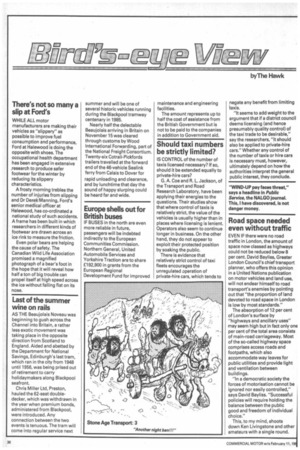Road space needed even without traffic
Page 38

If you've noticed an error in this article please click here to report it so we can fix it.
EVEN IF there were no road traffic in London, the amount of space now classed as highways could not be reduced below 8 per cent. David Bayliss, Greater London Council's chief transport planner, who offers this opinion in a United Nations publication on motor vehicles and land use, will not endear himself to road transport's enemies by pointing out that "the proportion of land devoted to road space in London is low by most standards."
The absorption of 12 per cent of London's surface by "highways and ancillary uses" may seem high but in fact only one per cent of the total area consists of main-road carriageway. Most of the so-called highway space comprises access roads and footpaths, which also accommodate way leaves for public utilities and provide light and ventilation between buildings.
"In a democratic society the forces of motorisation cannot be ignored nor easily controlled," says David Bayliss. "Successful policies will require holding the balance between the public good and freedom of individual choice."
This, to my mind, shoots down Ken Livingstone and other amateurs with a single round.
















































































